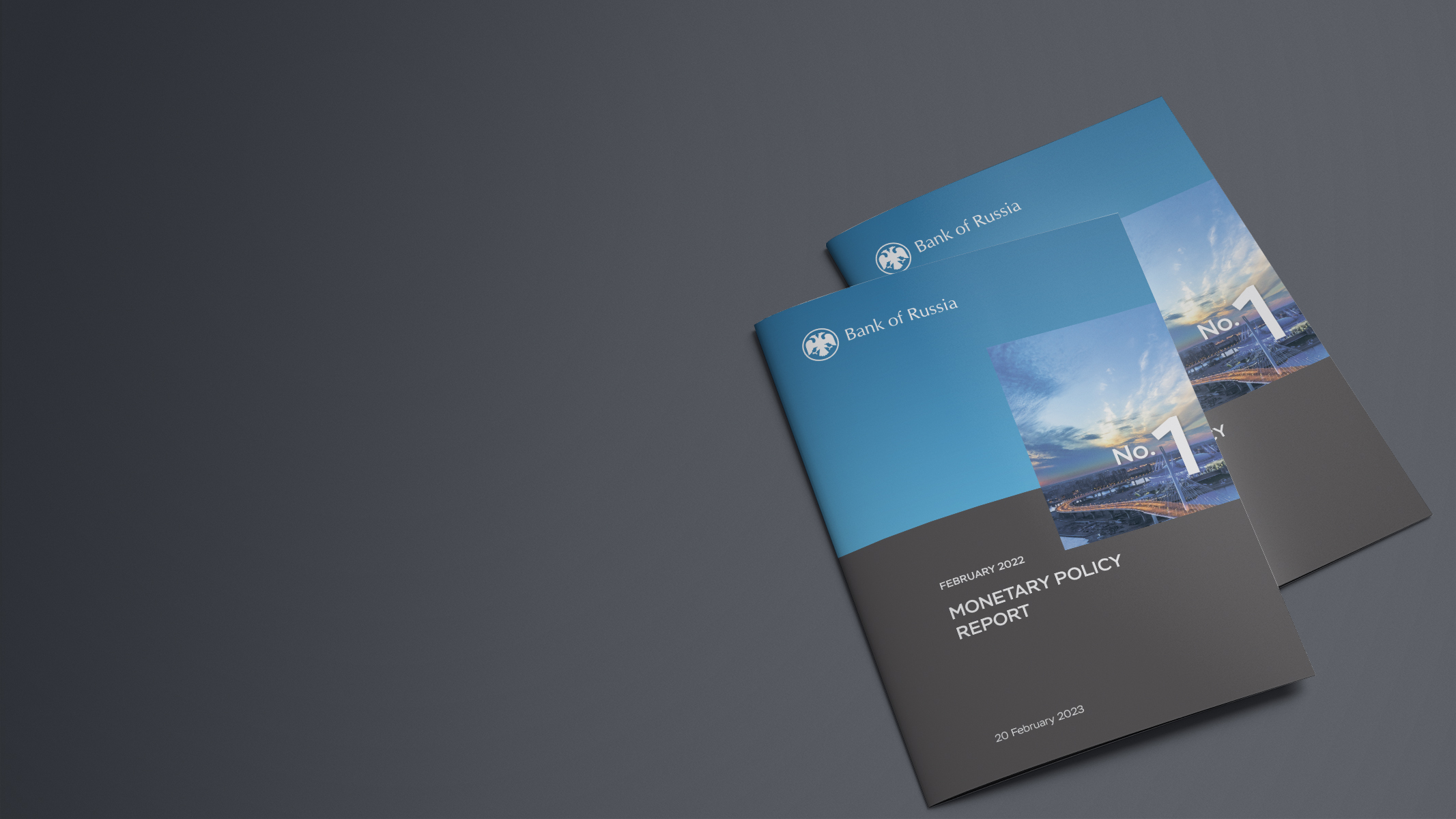In the quarterly Monetary Policy Report, in the follow up of the key rate meeting, the Bank of Russia presents its vision and assessment of the current economic situation and publishes the macroeconomic forecast underlying its key rate decisions.
Annual inflation is declining, but current price growth rates are gradually going up from low levels. In 2023, inflation will be 5–7%
Economic activity is on the rise, GDP forecast has been improved
Monetary conditions remain broadly neutral
Compared to the October forecast, the Bank of Russia may need a higher key rate path to stabilise inflation at 4% target in 2024
Current price growth rates are gradually increasing
As of 6 February 2023, annual inflation slowed down to 11.8%, but current price growth rates are increasing, in part due to stable components. In recent months, headline inflation has been also affected by the indexation of housing and utility rates, higher costs incurred by vegetable producers, and a weaker ruble. Inflation expectations have slightly abated, though remain elevated. The Bank of Russia forecasts that prices will increase by
Inflation, inflation expectations and Bank of Russia key rate
Economic activity is on the rise, the contribution of government spending to aggregate demand has increased
Relying on the data for the second half of 2022 and recent statistics for January 2023, the Bank of Russia has updated its medium-term macroeconomic forecast. The estimate of GDP decline in 2022 has been improved to (-2.5)%, GDP forecast for 2023 has been raised to (-1.0)—(+1.0)%. The higher GDP path is conditioned on both a smaller than expected decline in exports and a greater contribution of government spending to aggregate demand. In particular, growing government investment is replacing the decline in private sector investment activity. In late 2022, consumer demand remained subdued, but from early 2023, it has shown signs of recovery amid improved consumer sentiment.
Key forecast parameters
Growth, % YoY, unless indicated otherwise
| 2022 (actual/estimate) |
2023 | 2024 | 2025 | |
|---|---|---|---|---|
| Inflation, % change, Dec on Dec | 11.9 | 4.0 | 4.0 | |
| Gross domestic product | −2.5 | (−1.0)–(+1.0) | ||
| % change, Q4 on Q4 of the previous year | −4.6 | (−1.0)–(+1.0) | ||
| Household final consumption expenditure | −1.8 | |||
| Gross fixed capital formation | 5.5 | (−4.5)–(−1.5) | (−2.0)–(+1.0) | |
| Banking system’s claims on the economy in rubles and foreign currency, including: | 12.0 | |||
| on businesses | 13.2 | |||
| on households, including: | 9.4 | |||
| housing mortgage loans | 17.6 |
Monetary conditions remain broadly neutral, while individual indicators changed diversely
Since the December meeting, the OFZ curve has moved upwards, with a further increase in its slope. Yields continue to be shaped by higher economic uncertainty coupled with a considerable supply of government securities in the primary market. The situation in the lending and deposit markets has remained broadly unchanged. Credit to the economy continued to expand at a high pace. Budget expenditures made an additional contribution to the money supply growth in December and January.
OFZ yields and Bank of Russia key rate, % p.a.
* Maximum ruble deposit rate in the top ten banks.
The Bank of Russia may need a higher key rate path to return inflation to target
The balance of inflation risks is tilted to the upside. Proinflationary risks are associated with the persistence of elevated inflation expectations, the possibility of a rapid recovery in the propensity to consume, labour market constraints, as well as the impact on aggregate demand from the growth in, and acceleration of, budget expenditures. A higher key rate path, than assumed in the Bank of Russia’s October forecast, may be needed to return inflation to its target of close to 4%. According to the baseline forecast, the annual average key rate will be

